Karachi – Sindhabaad settlement
Audio Stories
Manthaar Jogi – Umerkot, Sindh
Pir Farrukh Shah Sarhandi – Sindh
Zameera – Rojhan Jamali, Jaffarabad, Balochistan
Photo Stories
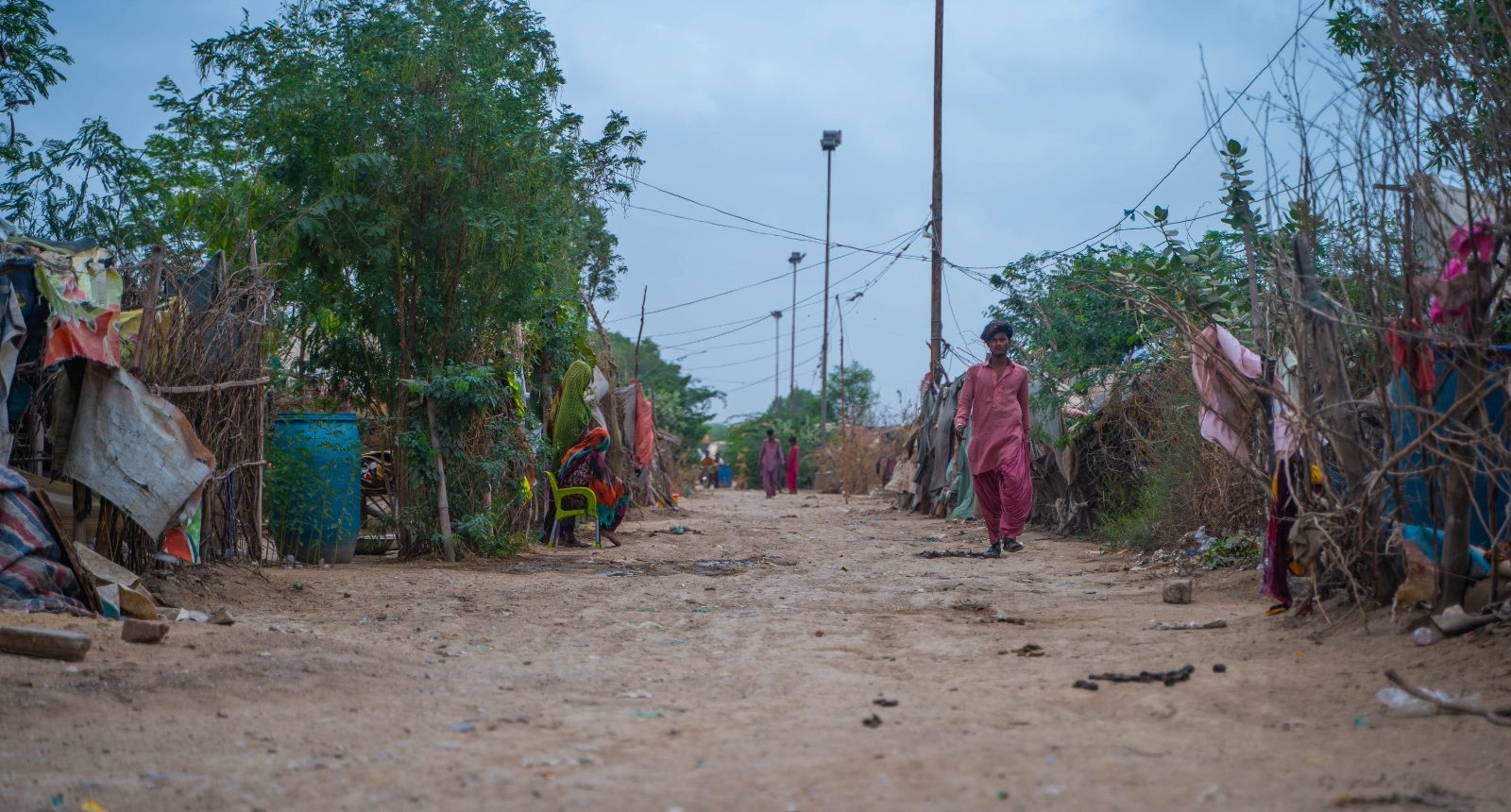 Along the bustling Karachi-Hyderabad Motorway (M-9), on the footpaths and service roads, one cannot miss the sprawling settlement, which is home to 40,000 families. This settlement emerged in the aftermath of the 2010 Super Floods in Sindh, Pakistan, providing shelter to those displaced by this climatic catastrophe.
Along the bustling Karachi-Hyderabad Motorway (M-9), on the footpaths and service roads, one cannot miss the sprawling settlement, which is home to 40,000 families. This settlement emerged in the aftermath of the 2010 Super Floods in Sindh, Pakistan, providing shelter to those displaced by this climatic catastrophe.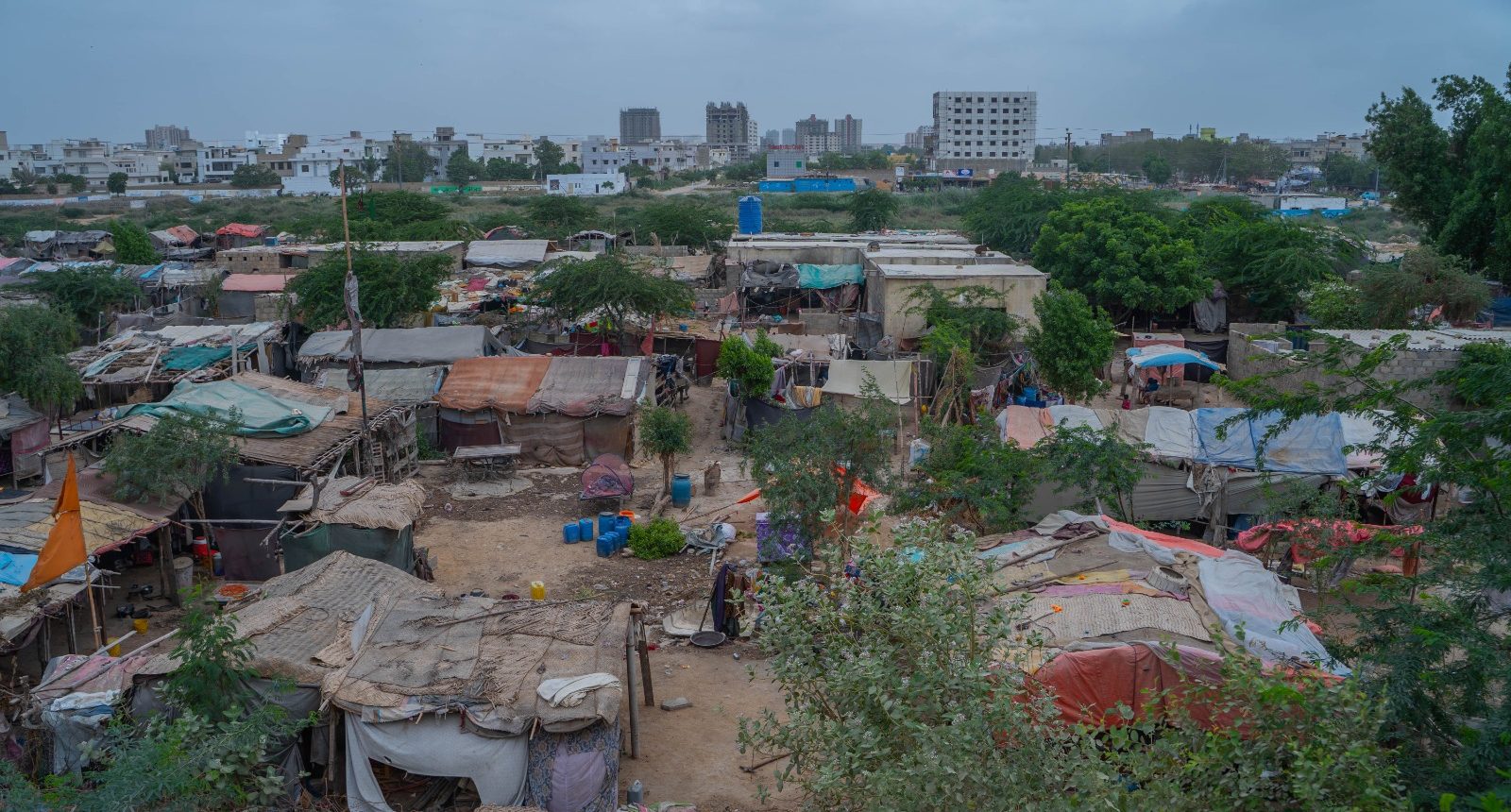 This settlement has been informally named Sindhabad by the philanthropist Pir Farrukh Shah Sirhindi, who has become a guardian of the families residing in this 12-kilometer stretch along the Super Highway.
This settlement has been informally named Sindhabad by the philanthropist Pir Farrukh Shah Sirhindi, who has become a guardian of the families residing in this 12-kilometer stretch along the Super Highway.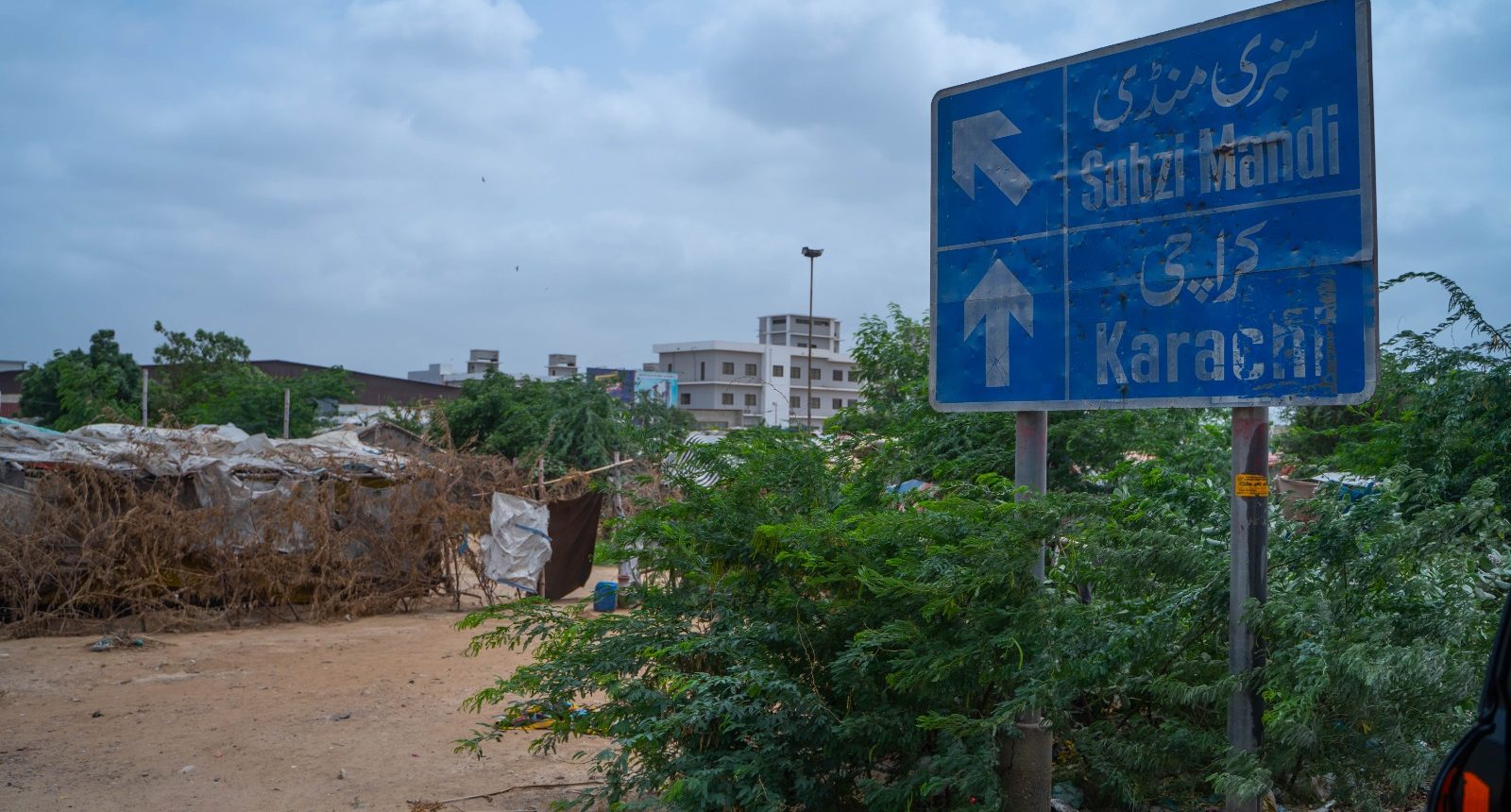 Sindhabad is located just opposite the New Sabzi Mandi, a wholesale fruit and vegetable market. Over 152,381 residents live here in makeshift structures constructed from materials like straw, bamboo, clothes, and panaflex, without access to basic facilities.
Sindhabad is located just opposite the New Sabzi Mandi, a wholesale fruit and vegetable market. Over 152,381 residents live here in makeshift structures constructed from materials like straw, bamboo, clothes, and panaflex, without access to basic facilities. Children of the Baagri community in Sindhabad enjoy playtime while their parents attend to their daily routines.
Children of the Baagri community in Sindhabad enjoy playtime while their parents attend to their daily routines.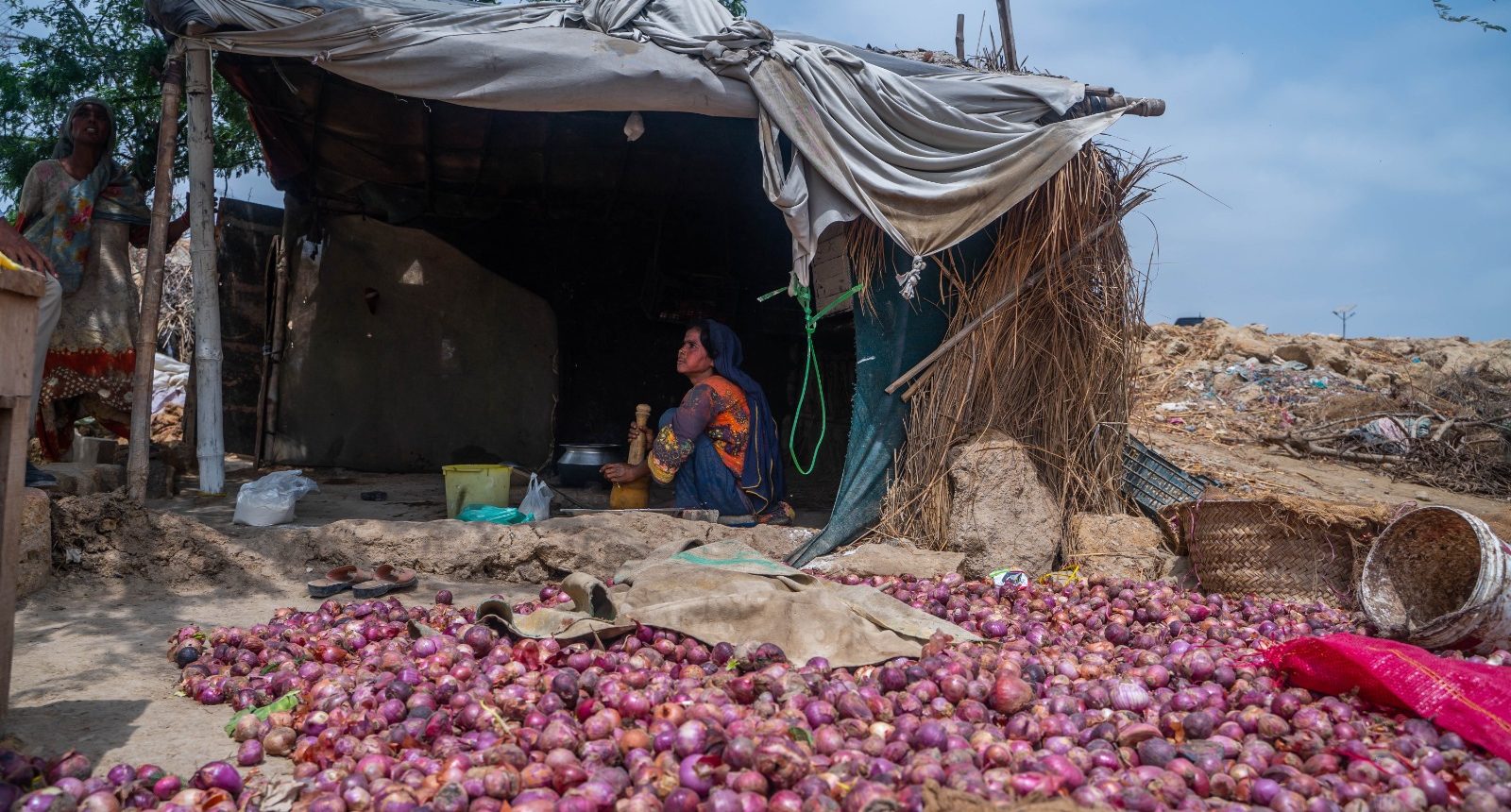 Men from the Baagri community work at the nearby wholesale vegetable market, while women are engaged in tasks like cleaning and packaging vegetables. They often work from home but sometimes find employment as household help in affluent neighborhoods.
Men from the Baagri community work at the nearby wholesale vegetable market, while women are engaged in tasks like cleaning and packaging vegetables. They often work from home but sometimes find employment as household help in affluent neighborhoods.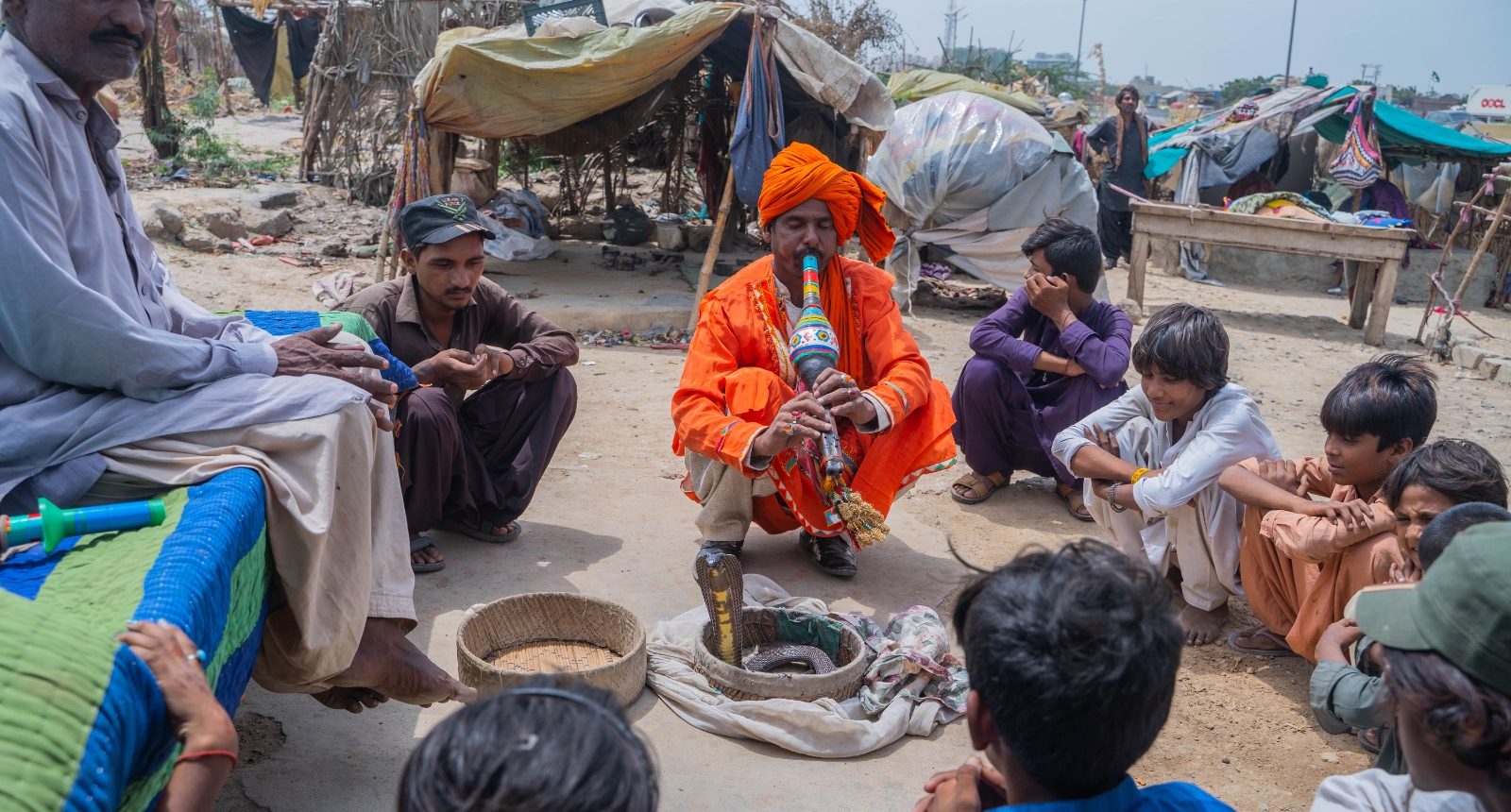 Sindhabad serves as a melting pot of diverse communities from across Sindh. Each community has its own compound and is protective of it. This area is home to nearly 500 families of Jogis, traditional snake charmers.
Sindhabad serves as a melting pot of diverse communities from across Sindh. Each community has its own compound and is protective of it. This area is home to nearly 500 families of Jogis, traditional snake charmers.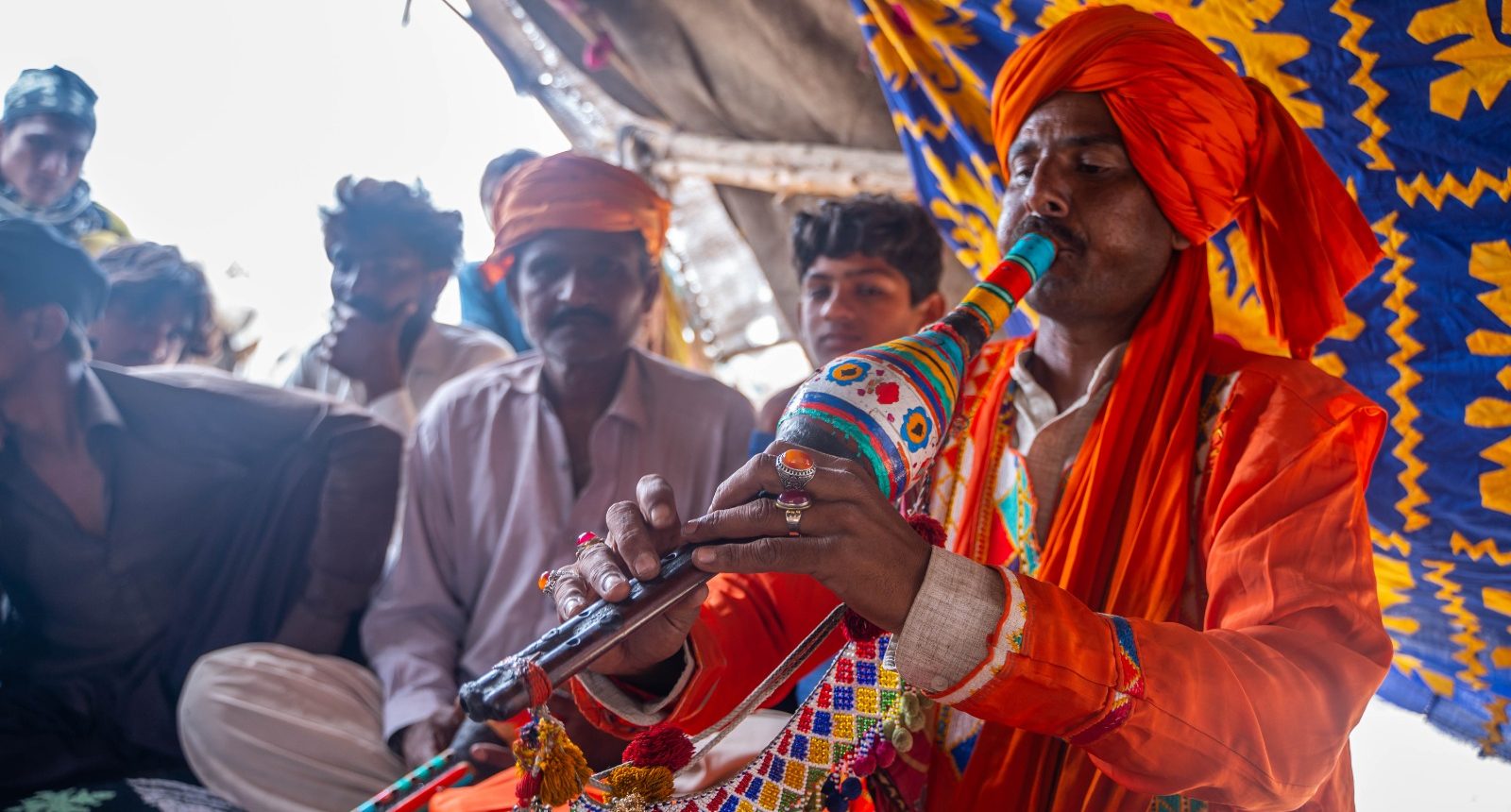 Manthar Jogi, known as Ustaad (Teacher) in the Jogi community, is a traditional snake charmer who has honed his skills professionally and can now pass them on to others. Unlike those affected by the 2010 Super Floods, the Jogi community relocated to Karachi from Umerkot during the droughts in 2014.
Manthar Jogi, known as Ustaad (Teacher) in the Jogi community, is a traditional snake charmer who has honed his skills professionally and can now pass them on to others. Unlike those affected by the 2010 Super Floods, the Jogi community relocated to Karachi from Umerkot during the droughts in 2014.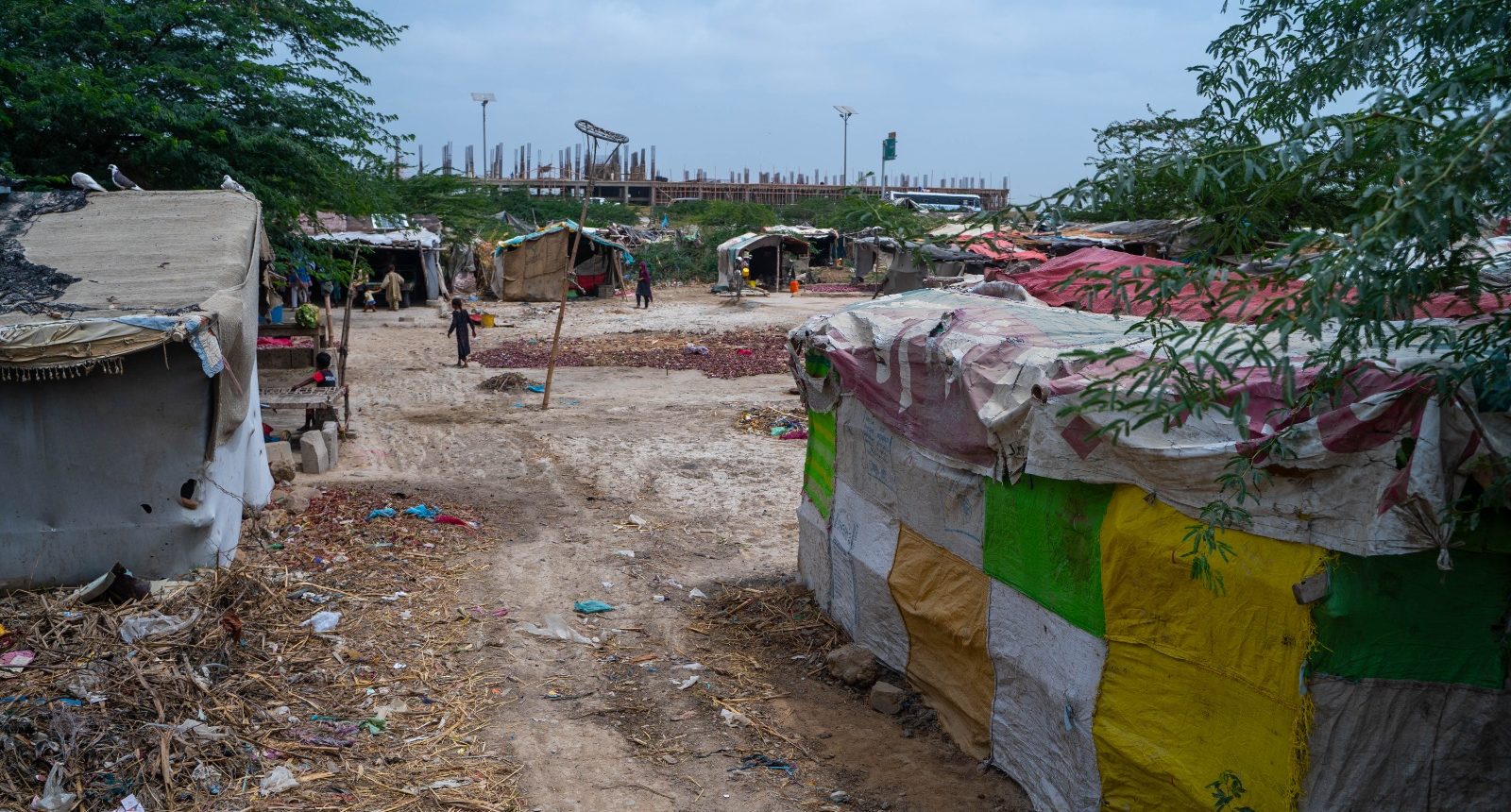 Sadly, this sizable displaced settlement, locally known as Sindhabad, is largely invisible and faces an uncertain future, with looming threats from development projects. However, they recognize the strength in their numbers and understand the potential for them to exert their influence when the time comes.
Sadly, this sizable displaced settlement, locally known as Sindhabad, is largely invisible and faces an uncertain future, with looming threats from development projects. However, they recognize the strength in their numbers and understand the potential for them to exert their influence when the time comes.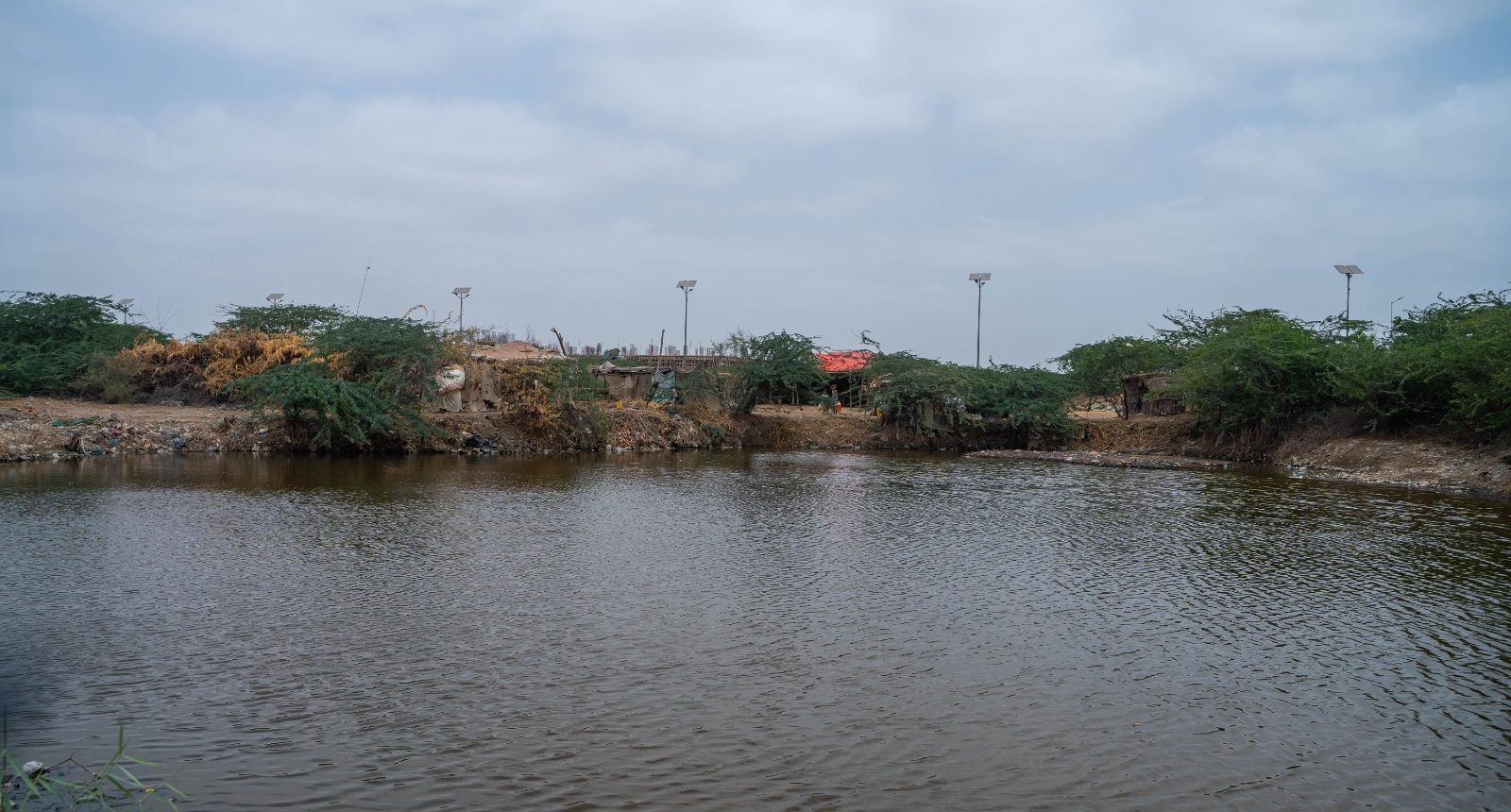 Sindhabad was not affected by the 2022 floods, as it is in a comparatively low-lying area. Although water still stands in parts of the settlement, the communities have shifted to higher ground along the highway.
Sindhabad was not affected by the 2022 floods, as it is in a comparatively low-lying area. Although water still stands in parts of the settlement, the communities have shifted to higher ground along the highway.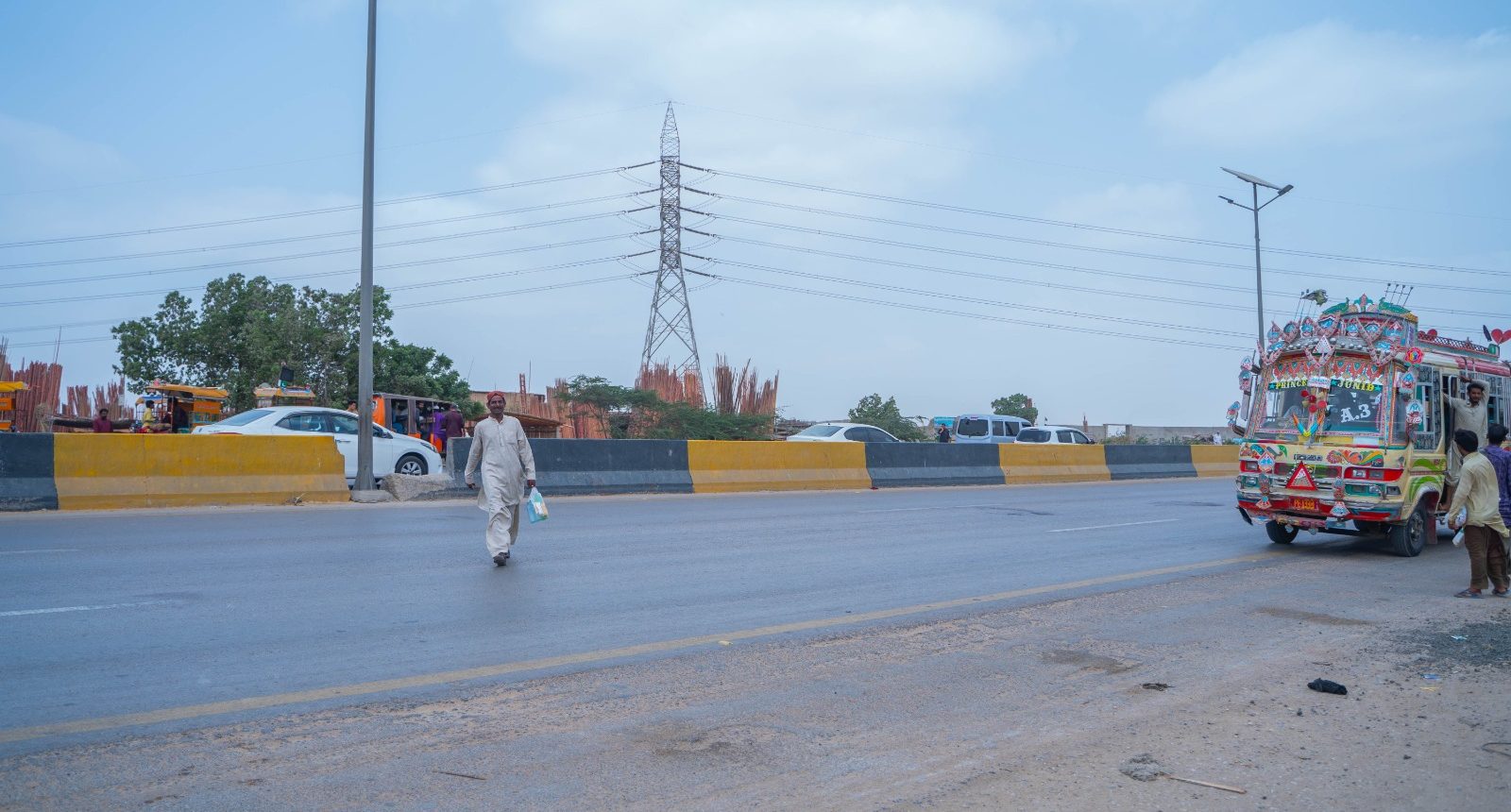 Mathar Jogi, a resident of the temporary settlement in Sindhabad, repeatedly crosses the Karachi-Hyderabad Motorway to purchase daily essentials from a shop across the highway. This risky movement, without a pedestrian bridge, is a daily occurrence for him and others in the community.
Mathar Jogi, a resident of the temporary settlement in Sindhabad, repeatedly crosses the Karachi-Hyderabad Motorway to purchase daily essentials from a shop across the highway. This risky movement, without a pedestrian bridge, is a daily occurrence for him and others in the community.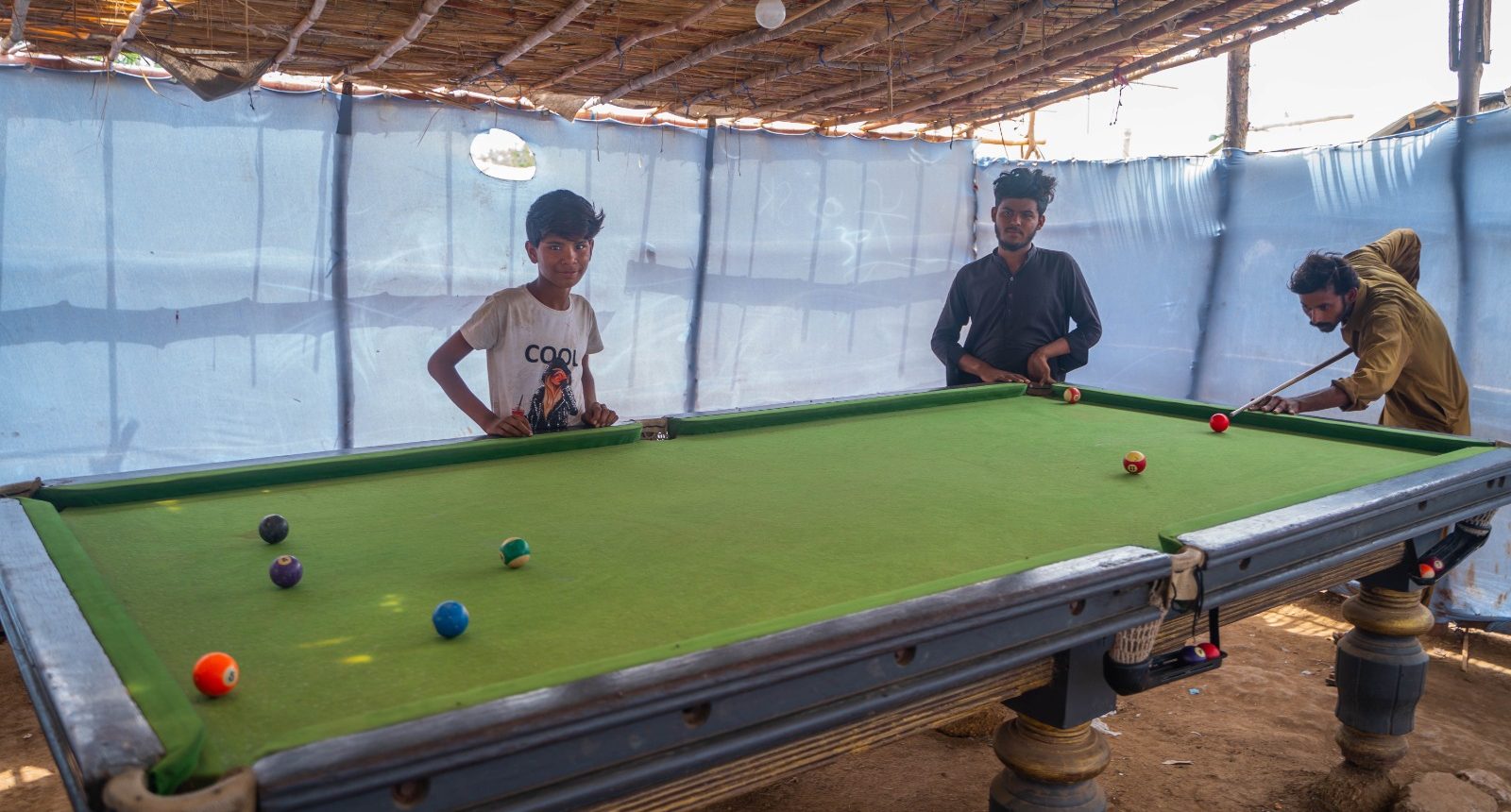 Life in this temporary settlement of Sindhabad encompasses various colors and shades. After residing here for more than a decade, the residents have organized their own forms of entertainment.
Life in this temporary settlement of Sindhabad encompasses various colors and shades. After residing here for more than a decade, the residents have organized their own forms of entertainment.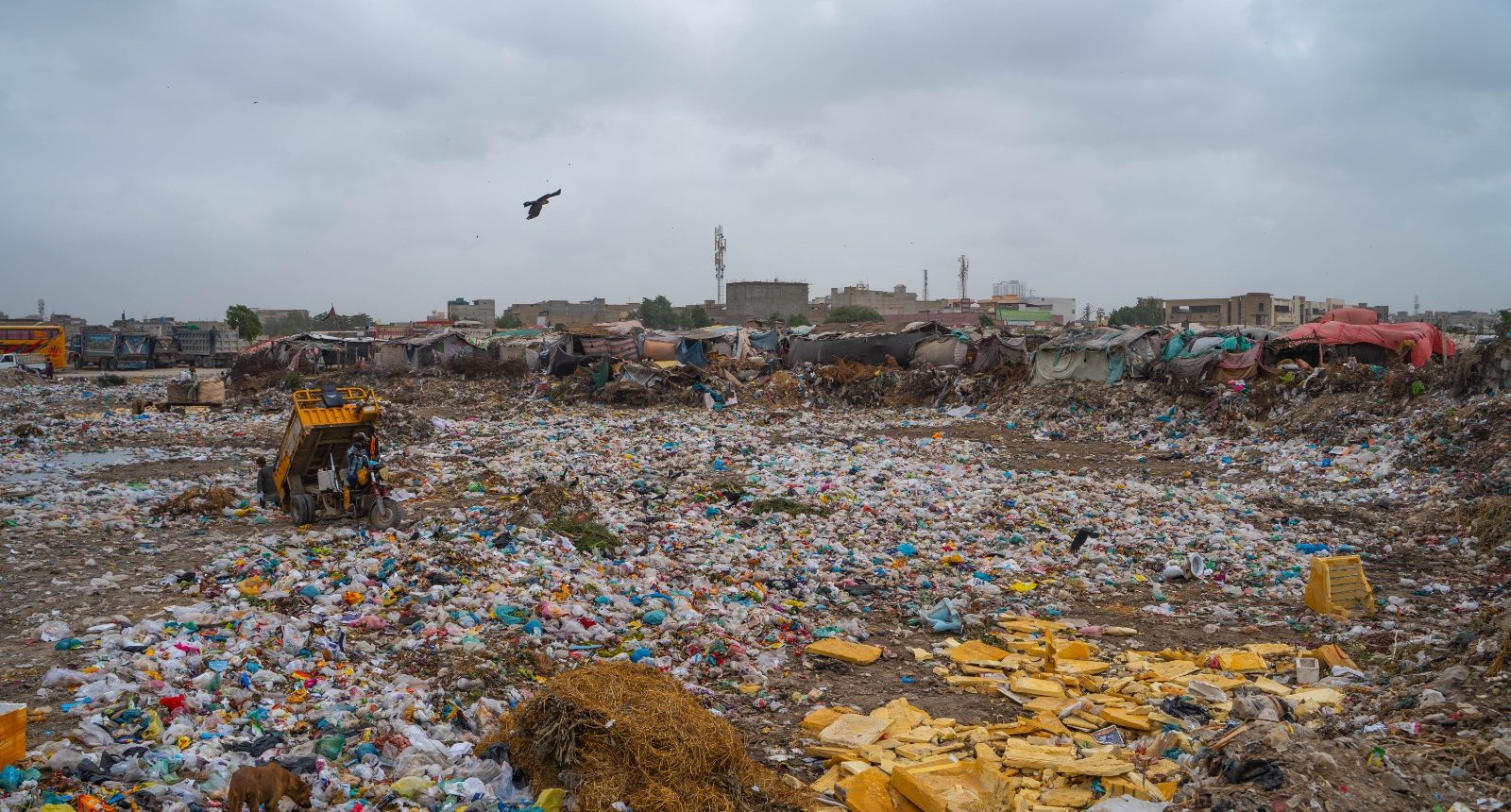 Some parts of the community are settled near a dumping site, presenting significant health hazards.
Some parts of the community are settled near a dumping site, presenting significant health hazards.
Sindhabaad, situated on the outskirts of the city within the Safoora Town Municipal Corporation of District East, is a settlement characterized by pragmatism and resourcefulness. Located near the Karachi-Hyderabad Super Highway (officially known as M-9), approximately 6 km from the Sohrab Goth bus station, Sindhabaad consists primarily of temporary structures made from locally sourced materials, such as straw, bamboo, and repurposed items like bedsheets, dupattas, and curtains. Some of these structures are elevated to prevent water ingress during adverse weather conditions.
In the aftermath of the 2010 floods in Sindh, Sindhabaad emerged as an ad hoc refuge for those displaced by climate-related disasters across various districts of the province, as well as from neighbouring Balochistan. These climate-displaced individuals, who have now transitioned into settlers, primarily hail from agricultural backgrounds and endured harsh living conditions in their villages due to recurring climate events. They come from diverse ethnic and religious backgrounds, including Hindu and Christian communities.
This community includes survivors of the 2010 floods and individuals affected by drought, who have transitioned into informal occupations within the settlement. These residents work in the bustling Karachi Sabzi Mandi, Pakistan's largest wholesale vegetable market, where they engage in roles such as sweepers, entertainers, guards, and cleaners, and some of the communities, live off beggary in comparatively rich neighbourhoods of Karachi.
Most residents in Sindhabaad make a living through humble occupations, primarily within the informal sector. They earn monthly incomes averaging 13,000 PKR ($42) from their work in the Karachi Sabzi Mandi. Living in less-than-sanitary conditions with limited access to clean water, Sindhabaad's inhabitants come from diverse ethnic and linguistic backgrounds, contributing to the multifaceted composition of life in the settlement, marked by both solidarity and simmering tensions.
Led by Pir Farrukh Shah Sarhandi, a self-proclaimed philanthropist with a political lineage and religious following, this community aimed to offer provisional shelter to those affected by the calamities. Supported by the Sindh Government, private donations, and Pir Farrukh Shah's efforts, Sindhabaad became home to a diverse population of climate-displaced persons impacted by climate disasters in Sindh. It is interesting to note that, Pir Farrukh Shah himself decided to name the settlement Sindhabaad as it houses people from all parts of the province of Sindh, and it is not named as such by the government. However, it's crucial to note that the residents of Sindhabaad, are now demanding legalized, permanent settlement status. This situation has given rise to political, religious, and ethnic tensions within what initially seemed like a benign displaced community.
Notably, the government played a role in facilitating the relocation of these climate-displaced persons from their inundated villages to these previously vacant, high-value plots, even providing government-funded buses for their transportation to Sindhabaad. However, the government failed to fulfil its promises of secure rehabilitation to these internally displaced communities in their native lands, leaving the residents of Sindhabaad living in constant fear of eviction.
As of the 2023 census, Sindhabaad is home to a population of 152,381 residents (as per the Census 2023), comprising approximately 40,000 families. However, it's important to note that their votes have not been registered in Karachi yet, which raises questions about their political representation. This situation is especially significant considering that the average provincial constituency size in Sindh is only 50% more, compared to Sindhabaad's population, highlighting the disparity in political representation. Hence, recognizing the strength in numbers, the residents of Sindhabaad demand political recognition, so that they can demand the basic facilities and utilities like water, electricity, education, and health for themselves.
Sindhabaad is a resilient community that has faced numerous hardships. Its residents have formed strong bonds while navigating displacement and adversity. As researchers and policymakers examine ways to address the challenges of climate-displaced communities and improve their living conditions, it is crucial to acknowledge the complex political, religious, and ethnic tensions that underlie the seemingly innocuous surface of Sindhabaad.
